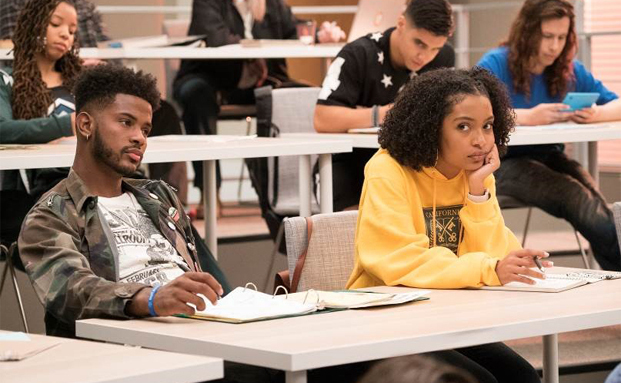This piece was submitted from a member of our enthusiastic community of readers. If you’re interested in sharing your opinion on any cultural, political or personal topic, create an account here and check out our how-to post to learn more.
More media outlets need to draw attention to the signs of mental health distress on social media. They must make an effort to share warning signs found on these platforms and connect college students with resources.
On a recent episode of Grown-ish, a silent party with college students dancing to the beat of their individual headphones comes to an end when party-goers notice the rush of a crowd and discover that EMTs have responded to campus after a young man’s Twitter post leads his roommate to believe he is suicidal. According to the American Foundation for Suicide Prevention, suicide is the 10th leading cause of death in the United States. This episode highlights how juggling academics, family, and friends impact undergraduates’ mental health.
The episode, titled “Only Human” spotlights the common occurrence of depression channeled through social platforms, like Twitter and Instagram. This show is a spin-off of Black-ish, in which Zoey Johnson and her undergraduate friends explore young adulthood while living on a university campus. Aaron, one of Zoey’s friends, admits to feeling guilty about scrolling past yet another one of PJ’s sad posts the day 911 is called. Although help arrives before PJ could take his own life, Aaron decides to lure his friends to a meeting about mental health.
A conversation between three male characters points to the influence of rappers sharing their emotions and drug of choice as a catalyst for making depression seem cool. Should rappers alone take the wrap for this? No. Now, there are some rap songs that get listeners bopping their heads to lyrics about feeling down and popping pills, such as the drug known as Molly. However, rappers are not the sole source of the pop culture influence. Other genres, like country music, sing to the tune of lyrics that reflect the connection between sadness and substances, like Tequila. This does not mean it deserves a pass, but importance should be placed on recognizing and reacting to a need for help.
Two groups are increasingly in need of mental health support. Research has found the percentage of teens and females (in general) reporting depression are growing. According to a report, released this year by the Pew Research Center, an analysis of the 2017 National Survey on Drug Use and Health uncovered 3.2 million 12 to 17-year-olds reported experiencing depression up from 2 million in 2008. Furthermore, the organization reported that both teenage and adult females experienced depression from 2007 to 2017 at a rate of growth higher than their male counterparts.
There is some evidence to suggest that one cause of negative feelings can be the use of social media itself. An article entitled, “’They Are Happier and Having Better Lives Than I Am’: The Impact of Using Facebook on Perceptions of Others' Lives,” by Hui-Tzu Grace Chou and Nicholas Edge, found the more time people spent on Facebook, the more likely they were to agree that other people were happier than themselves.
Some college students are using their social media accounts to share their depression, similar to the show’s character PJ. A study published by Monroe et al., entitled “Feeling Bad on Facebook: Depression Disclosures by College Students on a Social Networking Site,” revealed that a quarter of college students, with public Facebook profiles at one university, used status updates to broadcast depression.
It is important for college students to have access to mental health resources, just as they have access to academic supports. They should not be left to their own devices, literally and figuratively, when it comes to navigating mental health and cries for help on social media in the way that the students on Grown-ish are. Institutions have a responsibility to provide and promote adequate mental health resources.
According to the National Suicide Prevention Lifeline, warning signs of suicide may include expressing hopelessness, unbearable pain, and a desire to die or kill one’s self. Additional warnings can be found on their website, www.suicidepreventionlifeline.org.
World Suicide Prevention Day is September 10. For help with thoughts of death or suicide, contact the National Suicide Prevention Lifeline at 1-800-273-8255.
Cheyenne Seymour, Ed.D. is an Assistant Professor of Communication Arts & Sciences at Bronx Community College.
